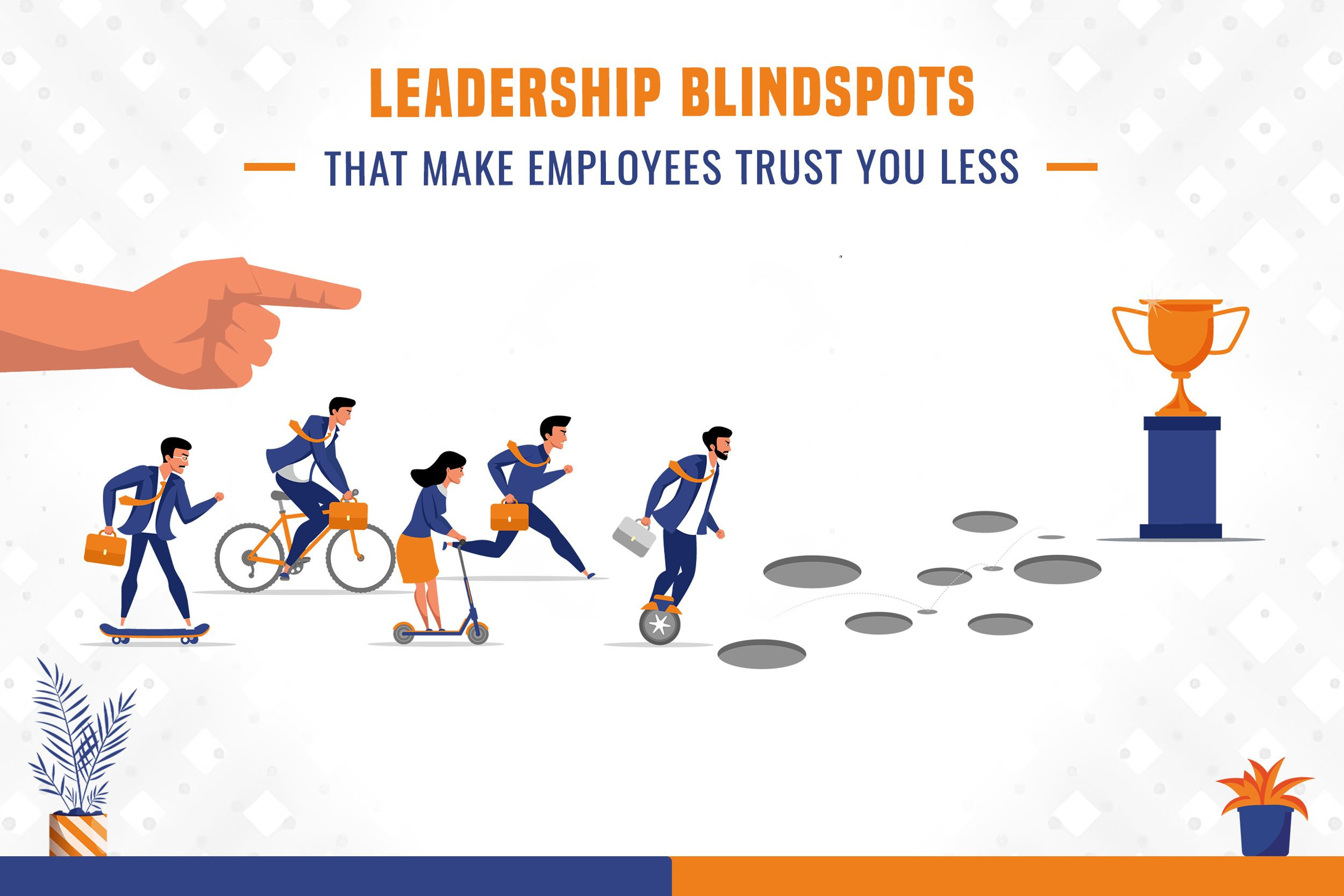
Leadership Blindspots That Make Employees Trust You Less
Effective leadership is not only about making decisions and giving orders, but also about fostering a sense of trust, respect, and collaboration within the team. Unfortunately, many leaders unknowingly possess blind spots that can undermine this trust and hinder team productivity. In this article, we will delve into the critical issue of leadership blindspots that have the potential to make employees trust you less. By addressing these blindspots head-on, you can create a workplace where trust thrives, and employees feel valued and motivated.
Leadership Blindspots That Make Employees Trust You Less
In this section, we will explore some of the most common leadership blindspots that can impact employee trust and provide actionable insights on how to overcome them.
Lack of Transparent Communication
In the realm of effective leadership, transparent communication serves as the bedrock upon which trust flourishes within a team. When leaders opt to withhold crucial information or falter in communicating pivotal changes, they inadvertently plant the seeds of doubt and uncertainty among their workforce. To counteract this detrimental blindspot, it becomes imperative to take proactive measures. This entails a commitment to disseminating pertinent information in a timely manner, actively encouraging team members to seek clarification through questions, and nurturing an atmosphere where feedback is not just welcomed but embraced. By cultivating such an environment, leaders can pave the way for enhanced trust, stronger team cohesion, and heightened productivity.
Micromanagement: Striking the Balance
In the intricate dance of leadership, the delicate act of micromanagement demands precision. Micromanaging employees inadvertently signal a lack of trust in their capabilities. Although supervision remains a requisite, an overabundance of such close oversight can breed frustration and, consequently, sap motivation. Navigating this terrain requires striking an equilibrium—a harmonious blend of providing necessary guidance and Leadership Training and Development while affording autonomy. It's essential to instill trust in your team's aptitude to produce results while extending a safety net of support whenever it's warranted. This calibrated approach fosters an environment of empowerment, where individuals are driven to excel, bolstering morale and overall team dynamics.
Taking Credit Instead of Giving Recognition
At the core of effective leadership lies the principle of championing your team's triumphs instead of appropriating their achievements. Inadvertently claiming credit for their successes tarnishes the collaborative spirit. Failing to duly acknowledge and revel in your team's contributions tends to fester feelings of bitterness and, in turn, corrodes the bedrock of trust. Establishing a routine of acknowledging and lauding your employees for their dedication and accomplishments is paramount. Also for their growth, invest in valuable Leadership and Management Training Courses for them. This practice not only elevates morale but also fortifies the connection between you and your team, nurturing a culture of mutual respect and fostering an environment where trust can flourish.
Being Inaccessible
In the realm of leadership, approachability emerges as a key catalyst for cultivating trust among team members. When leaders remain consistently inaccessible or aloof, employees may construe this as a lack of investment in their concerns. Fostering a culture of openness entails upholding an open-door policy, ensuring a receptive ear for your team's ideas, and showcasing the significance of their viewpoints. By consistently engaging with your team, actively listening to their input, executing their proper Leadership Training and Development, and demonstrating a genuine interest in their thoughts, you pave the way for an environment where trust flourishes organically. This, in turn, bolsters collaboration and empowers individuals to contribute their best, fostering a sense of shared purpose and mutual reliance.
Ignoring Diverse Perspectives
Failing to consider diverse viewpoints can alienate employees and make them feel undervalued. Embrace diversity and inclusivity by seeking input from all team members, regardless of their backgrounds or positions. Incorporating different perspectives can lead to innovative solutions and stronger trust.
Playing Favorites
When leaders show favoritism toward certain employees, it breeds a sense of unfairness and erodes trust. Treat all team members equitably, provide opportunities for growth to everyone, and base rewards on performance rather than personal preferences.
Not Providing Constructive Feedback
Constructive feedback is essential for growth, both for individuals and teams. Leaders who avoid addressing issues or offering guidance hinder the development of their employees. Regularly provide constructive feedback, focusing on improvement rather than criticism.
Allowing Conflict to Fester
Ignoring conflicts or not addressing them promptly can create a toxic work environment. Unresolved issues can lead to distrust among team members and disrupt collaboration. Address conflicts openly and mediate when necessary to maintain a harmonious workplace.
Not Leading by Example
Leaders who don't practice what they preach can lose credibility and trust. Be a role model for the behavior and values you expect from your team. When employees see you adhering to the same standards, their trust in your leadership will grow and they would be more willing to take part in Leadership Skills Development Training.
Overcoming Leadership Blindspots: A Proactive Approach
- Encouraging a Culture of Openness
Creating an environment where employees feel comfortable sharing their thoughts and concerns can help address multiple blindspots at once. Foster open communication by actively seeking feedback, conducting regular team meetings, and implementing anonymous suggestion boxes.
- Continuous Learning and Self-Reflection
Leadership is an evolving journey. Engage in continuous learning to identify your blind spots and work on self-improvement. Attend workshops, read leadership books, and participate in peer mentoring or Leadership Skills Development Training to refine your skills.
- Seeking Feedback from Employees
Constructive feedback from your team can provide valuable insights into your blindspots. Initiate regular feedback sessions where employees can express their opinions about your leadership style. Use this input to make necessary adjustments.
Final Words
Leadership blindspots are an inevitable aspect of human behavior, but they can be managed effectively with self-awareness, open communication, and a commitment to continuous improvement. By addressing these blindspots head-on, leaders can create a more cohesive and trusting work environment, leading to enhanced team performance and overall success.
